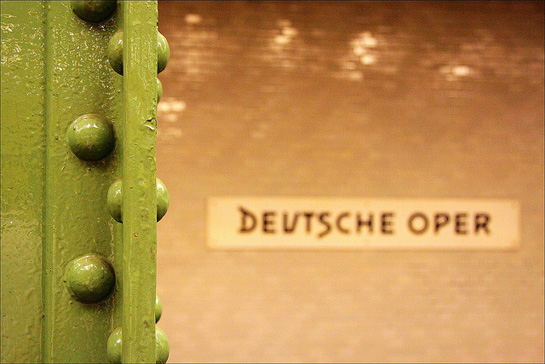 It was quite a sight to behold so many eager children and teens at the opera before the show even started; the theatre was already buzzing with excitement. Deutsche Oper’s most recent staging of Mozart’s The Magic Flute delivered a vibrant performance with a healthy dose of hilarity, romance, extravagance and of course, magic.
It was quite a sight to behold so many eager children and teens at the opera before the show even started; the theatre was already buzzing with excitement. Deutsche Oper’s most recent staging of Mozart’s The Magic Flute delivered a vibrant performance with a healthy dose of hilarity, romance, extravagance and of course, magic.
The Magic Flute tells a strange story in two acts that begins like a stereotypical fairy tale, with the troubled prince Tamino falling in love with the Queen of the Night’s daughter Pamina on seeing her portrait. Tamino is tasked by the Queen with saving Pamina from Sarastro, the queen’s arch-nemesis, and in this journey, he is accompanied by the birdcatcher Papageno, who himself is seeking love.
The story shares a plot structure with most romantic plays in having one pair of aristocratic lovers, and one drawn from ‘the common people’, the latter pair being accorded a simpler, more comedic treatment appealing to popular taste.
For his dangerous mission, Tamino is given the eponymous magic flute while Papageno gets a set of bells. In Act II, the story departs from its initially whimsical tone and subjects the lovers Tamino and Pamina to a series of ordeals orchestrated by Sarastro to ‘purify’ their love for each other.
The stage designs lent the show a sense of wonder. A tree stood to the right of the orchestra pit where in the first scene of Act I Tamino immediately sought refuge upon seeing what he thought was a gigantic serpent – a visual effect created by the undulating movements of a group of dancers. From there, the backdrops changed to fit a variety of scenes, among them a jungle landscape, a pyramid set-up with statues of Osiris and Isis, and a field of wheat.
The stage itself was a spectacle: the viewer perceiving it as a picture book with moving characters, such as the three young boys who literally flew over the stage while guiding Tamino to the house of Sarastro; their angelic voices soaring with their flight.
The stage and the narrative combined with Mozart’s music makes for an enchanting night at the opera. The character of Papageno, from beginning to end, is associated with lighthearted music, entering the first act with the phrase “Der Vogelfänger bin ich ja”.
Having been struck mute by the Queen for lying, he signals this state with the persistent sound “Hm, hm, hm, hm!” His story reaches its climax with his suicide attempt, undertaken in the belief that he has lost his love, Papagena. But even this receives comedic treatment as he sings that he will first count to three in case someone might happen to take pity on him and love him.
The conclusion is a joyful reunion of Papageno and Papagena, singing their excitement with punctuated, “pa-pa-pa-pa-pa-(Papageno/Papagena),” followed by the lines, “erst einen kleinen Papageno, dann eine kleine Papageno”. Theirs is a simple love story conveyed through celebratory music.
Undoubtedly, the most famous piece from the opera is the Queen of the Night’s aria “Der Hölle Rache kocht in meinem Herzen”, and seen live, the song renders anyone awestruck and gives them goosebumps all over. Its brilliant delivery was definitely the highlight of the night.
Perhaps, Sarastro was right about the Queen’s powers. Leaving the theatre and making one’s way back to ECLA, it was the Queen’s mesmerizing voice that lingered and rang in one’s ears.
by April Matias (2nd year BA, Philippines)
